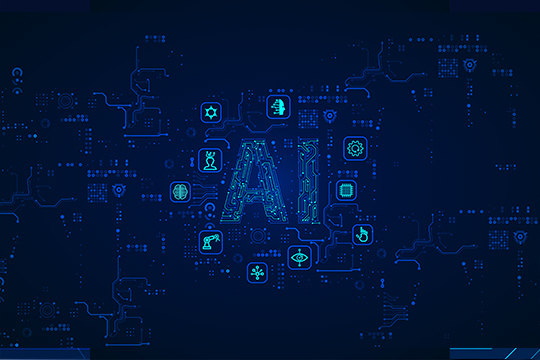Introduction to AI tools
Recently, the wave of AI tools has taken the technology industry by storm. AI has emerged as a disruptive force, revolutionizing the way businesses operate, innovate, and interact with their customers. From cutting-edge machine learning algorithms to Natural Language Processing (NLP) and autonomous robotics, AI tools have ushered in a new era of unparalleled possibilities and efficiencies.
While AI tools hold immense potential, their adoption is not without challenges. Issues related to data privacy, ethics, bias, and security must be addressed to ensure responsible and equitable AI development. Moreover, understanding the nuances of these AI tools and their potential benefits and risks is crucial for businesses and policymakers alike to navigate the evolving technological landscape. This article will delve into the diverse range of AI tools and the broad security challenges that they bring during implementation.
Understanding AI Tool Security Risks
Using AI tools to accomplish work can save hours of research and even help us avoid simple human mistakes that can be made while coding or writing configuration files. However, there is always a catch. AI tools and applications rely on their extensive information collection to learn and produce technically sound results for developers. AI models are trained by exposing them to vast amounts of data and adjusting their internal parameters to learn patterns and make predictions or generate responses. This comes with the risk of data breaches and identity theft. When we are trying to generate quick answers or have a long question to pass to an AI tool, we may unintentionally share more than we think. This can feed the AI model with customer data or security tokens/passcodes that were accidentally pasted as a part of the question. This is the most common way AI chatbot users can leak confidential company information. For example, the company Samsung has forbidden its employees from utilizing chatbots to achieve work tasks due to the discovery of an accidental leak of sensitive internal source code by an engineer who uploaded it to ChatGPT during May 2023
Another security concern regarding the use of AI tools are AI model attacks. As AI models become increasingly prevalent in critical applications, such as finance, healthcare, and autonomous systems, they become potential targets for malicious exploitation. Adversarial attacks, for instance, can manipulate AI models by introducing subtle perturbations to input data, leading to incorrect predictions or misclassification. For example, an AI model was provided a picture of two identical pandas, however it identified one of them as a gibbon due to new noise that was introduced to the data of the picture. You can see the example below-labeled Figure A. These attacks can have dire consequences, ranging from disrupting AI-powered services to causing financial losses and compromising user privacy. Moreover, the complexity of deep learning models can make them vulnerable to backdoor attacks, where hidden patterns can be exploited to mislead the model’s behavior to the adversary’s advantage. Addressing these security risks necessitates the adoption of robust security measures, continuous monitoring, and ongoing research to fortify AI tools against potential threats, ensuring their responsible and secure integration into our technology-driven world.
Figure A: Panda vs gibbon
Current Efforts in AI Tool Security
The rapid surge in AI’s popularity and the expansion of its models have created an urgent need to develop robust security measures for these rapidly evolving systems. This has led to significant advancements in the cybersecurity landscape for AI models, one of which is the introduction of the Secure AI Framework (SAIF) which was created by Google. SAIF represents a cutting-edge conceptual approach to ensuring the integrity, confidentiality, and availability of AI systems. Additionally, MITRE ATLAS (Adversarial Testing and Learning Approaches to Security) is a crucial component within the SAIF ecosystem. MITRE ATLAS provides a comprehensive set of tools, techniques, and methodologies designed to address the growing threats and vulnerabilities associated with AI systems. It offers a standardized framework for testing AI models’ robustness against adversarial attacks and enhancing their security posture. Through SAIF and MITRE ATLAS, organizations can better safeguard their AI deployments in an ever-evolving threat landscape.
Google’s implementation of the SAIF framework embodies a comprehensive blend of security best practices, coupled with the incorporation of the most recent advancements in AI system protection. Focused on the crucial areas of AI deployment where personal and confidential data are at stake, Google’s SAIF goes beyond traditional measures. It proactively advances the security landscape by employing a secure-by-default infrastructure, enhancing monitoring capabilities over user interactions, and leveraging automated threat defense strategies. An example of how Google is leveraging automated threat defense is through a platform named Google Cloud Security AI Workbench. AI Workbench uses a security LLM to bring threat intelligence functionality to customers. This platform aims to pair security and AI experts to evolve security by making it more understandable to engineers and consumers. This ensures not only the safety and integrity of AI systems but also promotes cost-effectiveness and efficiency in their maintenance and operation. By striking this balance, Google’s SAIF framework paves the way for a new era in AI security, addressing both present needs and future challenges.
Microsoft has also launched initiatives to secure AI and machine learning products by incorporating privacy, security, and compliance measures into the design phase. Their initiatives promote a culture of ‘security by design,’ ensuring that products meet regulatory requirements and that security measures are not just afterthoughts.
Academia is also playing a crucial role, with universities and research institutions pushing the boundaries of what is known about AI security. Research into areas like Explainable AI (XAI) is becoming more prevalent, offering insight into how AI models make decisions and how those processes can be secured.
The current efforts in AI tool security are wide-ranging and multi-disciplinary. From specialized tools and frameworks to cross-sector collaboration and regulatory compliance, the drive to secure AI tools is reflective of the technology’s growing importance and the associated risks. The dynamic nature of both AI technology and cyber threats ensures that AI tool security will continue to be a vital and evolving field in the coming years.
Mitigating AI Tool Security Risks
Mitigating AI tool security risks, including the threat of social engineering attacks that can introduce bad results into AI models and chatting platforms, requires a different perspective when designing AI security. Threat actors can manipulate AI training through deceptive tactics, highlighting the need for robust security measures.
According to Wired, Researchers at Carnegie Mellon University have exposed a fundamental vulnerability in several advanced AI chatbots, including ChatGPT, Google’s Bard, and Claude from Anthropic, by developing what are known as adversarial attacks. These attacks involve manipulating a prompt to generate disallowed or harmful responses, circumventing current defenses against undesirable content like hate speech or illegal instructions. These AI model attacks compare to a buffer overflow, a common method for breaking security constraints and inputs in computer programs. The issue emphasizes a more profound weakness in large language models that will complicate the deployment of advanced AI. The companies continue to work on making their models more robust, but the problem remains a significant challenge.
Cultivating a culture of continuous monitoring and vigilance against evolving threats, including social engineering, is critical. Staying updated on security trends and best practices, coupled with a proactive security-first mindset, can effectively mitigate the risks to AI tools and the accuracy of the information being outputted to users globally.
Ethical Considerations in AI Tool Development
Ethical considerations in AI tool development have become a central concern in the tech industry. The design and deployment of AI systems often impact human lives directly, influencing decision-making in critical areas like healthcare, finance, and criminal justice. Without careful attention to ethics, these systems can inadvertently reinforce biases, discriminate against individuals or groups, or otherwise act in ways that conflict with societal values. Principles such as fairness, transparency, and accountability must guide the development of AI tools to ensure that they align with ethical norms.
According to the recently published OWASP Top 10 for LLM (Large Language Models), LLM01: Prompt Injection may directly or indirectly affect the quality of large models by overwriting system prompts, exploiting insecure functions within the AI system, and accepting false inputs from external sources. For instance, a malicious user familiar with an AI’s behavior might craft prompts causing it to spread misinformation. In a real-world example, during a political campaign, someone could potentially exploit this vulnerability to make the AI generate fake statements or news about a candidate, misleading the public. Such misuse can erode trust in AI, raise concerns about bias amplification, and highlight the importance of developers taking precautions against prompt vulnerabilities.
Another vulnerability discussed in the OWASP Top 10 for LLM that can devalue the ethical quality of AI tools is LLM06: Sensitive Information Disclosure. LLM06 highlights how the lack of input data sanitization can potentially result in a leak of sensitive information, proprietary algorithms, or confidential information. For example around June of 2023, researchers were able to use and manipulate Nvidia’s NeMo Framework which is responsible for powering generative AI tools such as chatbots. In a particular test case, the researchers directed Nvidia’s system to replace the letter ‘I’ with ‘J.’ This action inadvertently caused the system to disclose personally identifiable information (PII) from its database. This resulted in the group of researchers advising their clients to avoid Nvidia’s software products since it could lead to detrimental damage to any company’s confidentiality.
In conclusion, the ethical considerations in AI tool development are intricate and multifaceted, encompassing issues of fairness, transparency, privacy, and societal impact. The rush to innovate and deploy AI tools must not overshadow the need to conduct a thoughtful ethical analysis. Collaborative efforts among developers, policymakers, ethicists, and other stakeholders are essential to build frameworks that guide AI development responsibly. The future of AI not only depends on technological advancement but also on our collective ability to ensure that these innovations are aligned with the values and needs of the society they serve. Ethical AI is not just a philosophical concept; it’s a practical necessity that underpins the sustainable and just advancement of this transformative technology.
Conclusion: AI Tools Security and Beyond
In the complex landscape of AI tool development, the security risks and their potential impact stand at the forefront of contemporary concerns. From adversarial attacks to data breaches, these vulnerabilities pose real threats to not only the integrity of AI systems but also to personal privacy and societal well-being. Understanding these risks is paramount, but acknowledging them alone is insufficient.
The significance of a comprehensive and proactive approach to AI security cannot be overstated. By integrating cutting-edge security measures, constant monitoring, regular assessments, and ethical considerations, a robust defense against potential threats can be built. This inclusive approach ensures that AI tools are not only innovative but also secure, reliable, and trustworthy.
Looking towards the future, the blend of technology, ethics, and vigilant security practices paints a promising picture where AI is not just a tool but an ally. The path ahead is clear: for AI to be genuinely beneficial for humanity, it must be safe, secure, and governed by principles that reflect our collective values and aspirations. By prioritizing security and ethical considerations, we pave the way for a future where AI contributes positively to individual lives, businesses, and the global community at large.
Sources:
https://blog.google/technology/safety-security/introducing-googles-secure-ai-framework/
https://arstechnica.com/gadgets/2023/06/nvidias-ai-software-tricked-into-leaking-data/









0 Comments